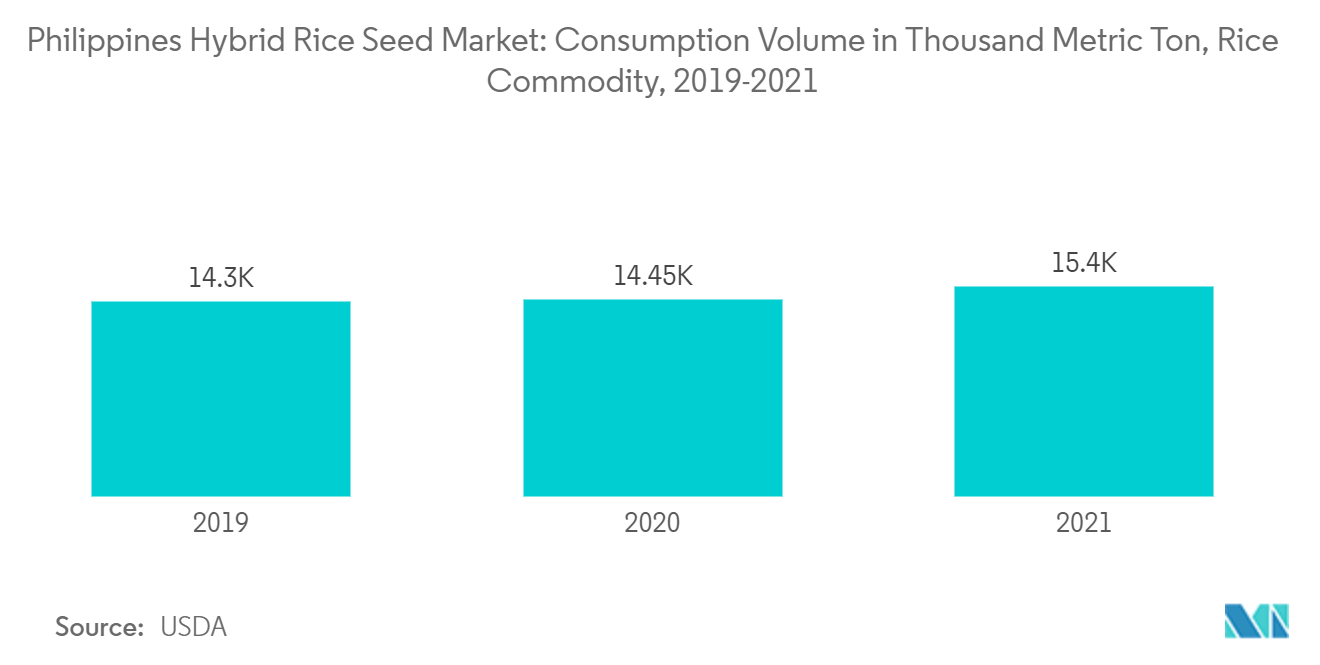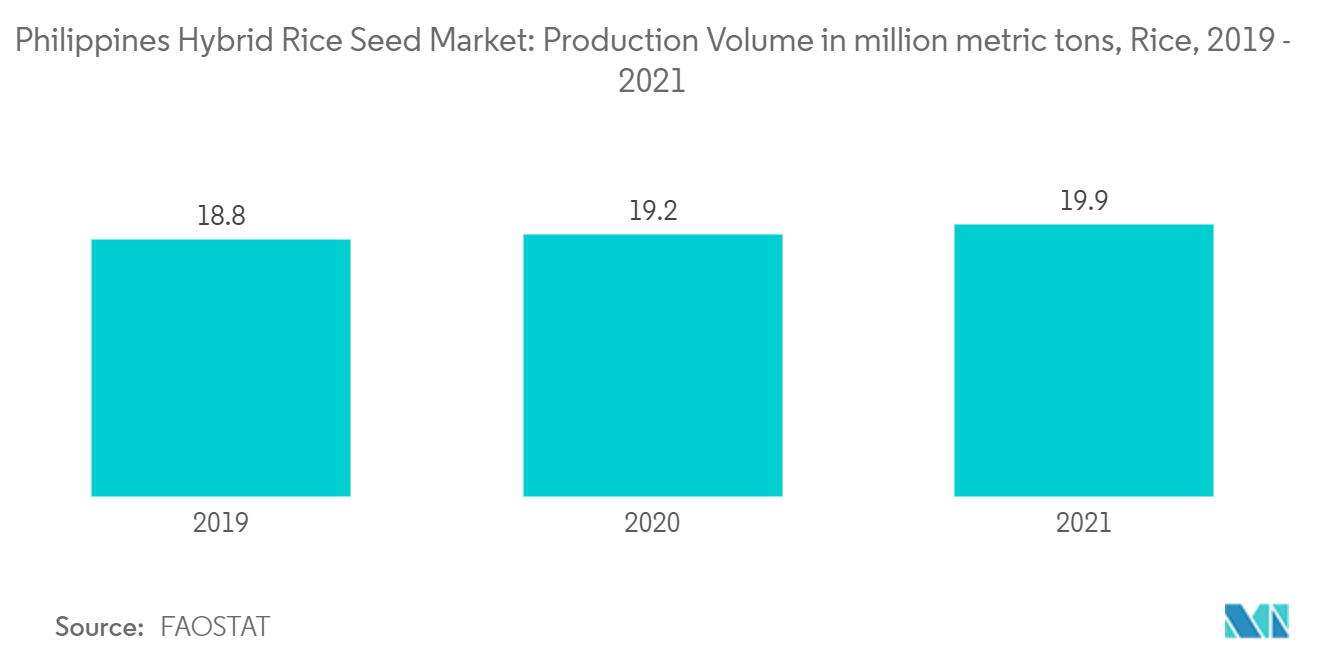Market Trends of Philippines Hybrid Rice Seed Industry
Increasing Consumption of Rice as a Staple Food
Rice is the main staple of the Filipino population. The Philippines is the eighth largest producer of rice globally, having produced milled rice 11,927 million metric tons of rice in 2020 and with production concentrated mainly in Cagayan Valley, Central Luzon, and Mindanao. Additionally, rice is an essential economic commodity, so its consumption is seeing robust growth. As per the Food and Agriculture Organization (FAO), rice provides 20% of the dietary protein, 27% of the dietary energy supply, and 3% of the dietary fat.
However, such rising consumption demands are putting pressure on the farmers in the region, making them dependent on the cultivation of hybrid rice varieties, as these hybrid rice seeds yield more than conventional varieties under similar conditions. Hybrid rice seeds show a 15-20% yield benefit giving higher economic returns. Hybrid rice has the practical potential to improve productivity. Other significant advantages of the hybrid rice seed involve increased vigor (which makes them more competitive with weeds) and increased resistance to diseases and insects. Hence, several players in the country are also offering hybrid rice varieties to expand in the hybrid rice seed market. For instance, in 2021, SeedWorks Philippines teamed up with the Mindanao Development Authority to demonstrate a field trial of TH-82 hybrid rice variety on about 1,000 square meters of rice fields in 10 identified traditional rice farming areas in Central Mindanao, Davao, Northern Mindanao, Caraga Region, Zamboanga Peninsula and the Bangsamoro Autonomous Region in Muslim Mindanao.

Favorable Government Initiatives is boosting the Production
Rice is the primary food for about 80% of Filipinos and is therefore a key item in the consumption basket of consumers. Since the Government of the Philippines has implemented a food security policy based on rice self-sufficiency, this extra rice production will have to come from using less water and less land, labor, and pesticides. Hybrid rice technology is known as a key approach to increasing rice productivity in the country. Since the government introduced the Hybrid Rice Commercialization Program in 2002, project proponents from both the public and private sectors have proposed various hybrid rice seed varieties. Further, in 2022, after a sixteen-year technical collaboration, SL Agritech Corporation (SLAC) and the Bangladesh Agricultural Development Corporation (BADC) made a memorandum of agreement (MOA) for SL-8H F1 seed production, which further reinforces agricultural technological development between the Philippines and Bangladesh.
Moreover, the General Appropriations Act of 2021 allocated P15 billion (USD 315 million) to the Hybrid Rice Program, more than double last year's approximately P7 billion (USD 147 million). About 1.3 million ha are currently planted with hybrid rice, indicating 27 percent of the rice area planted and 36 percent higher than 2020's level. DA's (Department of Agriculture) program will target 15 provinces that have demonstrated high yields with hybrid rice. Top-performing areas get up to 12 MT/HA matched to the national average of 4 to 5 MT/HA. Additionally, in 2020, a rice-breeding program between China and the Philippines, although not as widely publicized as big-ticket infrastructure projects, has become one of the most significant hallmarks of the two countries' cooperation. China is the world's pioneer in hybrid rice technology and allows the country to feed its growing population even though the nation has only 7% of the world's arable land.
Hence, the Philippines Government programmed aims at utilizing hybrid rice technology as a new approach to growing national rice production and the productivity and keenness of Philippine farmers over the short term, and to achieve national rice self-sufficiency and food security over the long term. As a result of this government initiatives, the production of rice has increased. For instance, according to FAO the production of rice in Philippines in 2021 is 19.9 million metric ton which showed an increase from 18.8 million metric ton in 2019. Therefore, the increased government initiatives is catering to the increased production of rice during the forecast period.


